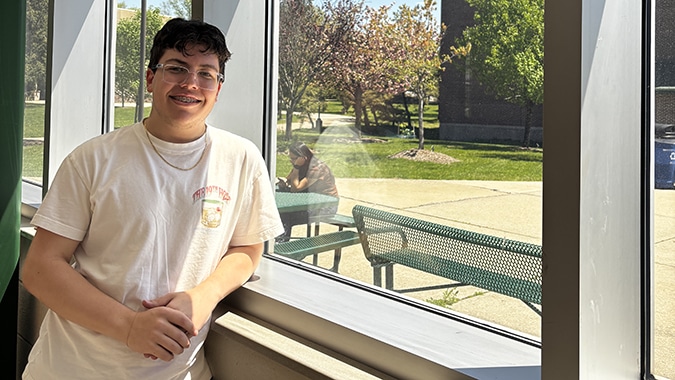The Department of Environmental Protection has awarded $3.5 million in grants for projects to reduce the impacts of nonpoint source pollution on waterways, including $1 million for the development of lake and watershed restoration plans to mitigate harmful algal blooms, Commissioner Catherine R. McCabe announced today.
Nonpoint source pollution is caused by stormwater runoff that carries a wide variety of pollutants into waterways, including nutrients from fertilizers, animal waste and improperly operating septic systems. As directed by Governor Murphy, the DEP also earmarked $1 million for projects specifically
Want More: Join Us Sept. 4 for Virtual Environmental and Energy Policy Committees Meeting
addressing harmful algal blooms, also known as HABs, as part of the Administration’s comprehensive HAB response strategy, which directs $13.5 million in funding for various water quality improvement projects, established a new health alert system to better inform the public about suitable recreational uses of impacted lakes and resulted in a new HAB reporting and mapping tool.
Non-point source pollution grants have been awarded for the following projects:
- Lake Hopatcong Commission, $206,000, to conduct a refined quantification of Lake Hopatcong’s internal phosphorus load, using a combination of existing water quality data, additional water quality sampling, and modeling. The results of this assessment will be used to determine if steps should be taken to reduce the internal phosphorous load through in-lake management efforts and if such efforts would be cost-effective. The Commission will also implement nonpoint source pollution reduction projects in the Lake Hopatcong watershed, including the installation of floating wetland islands, shoreline stabilization with native plants, the replanting of stormwater basins, and maintenance of existing filtering boxes to optimize stormwater filtration.
- Morris County Park Commission, $495,000, to install several major green infrastructure features at Lee’s County Park Marina on the shores of Lake Hopatcong in Mount Arlington Township. The Commission will install curb cuts and grading improvements to direct stormwater runoff to five bioretention basins for reduction of phosphorous, nitrogen, total suspended solids and other pollutants. Additionally, eight stormwater inlets to Lake Hopatcong will be retrofitted with manufactured treatment devices for removal of nutrients and sediments.
- Raritan Headwaters Association, $49,000, to develop a Watershed Restoration and Protection Plan for Budd Lake and its watershed that addresses nutrient inputs and pathogen loadings that contribute to HABs. A 2007 Total Maximum Daily Load (TMDL) plan for Budd Lake requires a 99 percent reduction in pathogen loading from internal and external sources. Additionally, nutrients carried by stormwater runoff likely contributed to a HAB event in the summer of 2019. A Watershed Restoration and Protection Plan will be a blueprint for achieving pathogen reductions and reducing the impacts of stormwater runoff.
- Lake Topanemus Park Commission, $96,000, to update the existing lake characterization study from 1983, as well as identify the steps necessary for future restoration and management. Funds will help develop a Lake Protection and Watershed Management Plan that will guide lake management activities undertaken by the Commission. Water quality issues including eutrophication, elevated nitrogen and phosphorous levels, sediment accumulation, and dense aquatic plant growth have been documented in Lake Topanemus.
- New Jersey Water Supply Authority, $80,000, to develop a watershed restoration and protection plan for three sub-watersheds that drain to Spruce Run Reservoir – Spruce Run Creek, Willoughby Brook and Rocky Run – and the reservoir itself to address and reduce nutrient loads contributing to HAB events in Spruce Run, as well as existing bacterial impairments.
- Borough of Bay Head, $85,000, to develop a Twilight Lake Protection and Watershed Management Plan that will enable the borough to properly identify, design, and implement future restoration activities in Twilight Lake, addressing existing impairments and emerging threats to water quality.
- Swartswood Lakes and Watershed Association, $40,000, to develop a watershed restoration and protection plan for the Swartswood Lakes. The plan will identify pollutant sources and provide recommendations to reduce pollutant loading from sources both external and internal, and serve as the blueprint for future restoration activities in the Swartswood Lake watershed to manage and reduce nuisance plant growth and algal blooms, and to improve dissolved oxygen, water clarity, and fishery resources.
- Swartswood Lakes and Watershed Association, $270,000, for a separate project for the inspection of Swartswood Lake’s existing aeration system, supplemental water sampling to assess the performance of the current system, and the execution of necessary repairs or replacement of the existing system. This system helps maintain proper dissolved oxygen levels during the summer, prevents water from stagnating, discourages nuisance algae growth, and helps maintain proper water chemistry for the breakdown and consumption of nutrients by microorganisms. It also discourages conditions conducive to HAB formation.
- Musconetcong Watershed Association, $126,000, to update and expand the “2012 Musconetcong River Restoration and Protection Plan – Hampton to Bloomsbury,” to include four additional U.S. Geological Survey HUC14 sub-watersheds. When implemented, this plan expansion will guide efforts to reduce fecal coliform pollution, improve benthic macroinvertebrate communities, and address pH impairments.
- Rutgers University, $170,000, to develop Watershed Restoration and Protection Plans for the Miry Run and Doctors Creek watersheds, which will facilitate attainment of the required reductions in total phosphorus loading which is the primary cause for over-enrichment (eutrophication) and contribute to HABs. A primary goal of these plans is to identify specific pollutant sources and recommend stormwater management practices to reduce pollutant loading.
- Sussex County Municipal Utilities Authority, $190,000, to build upon the momentum of past projects related to its DEP-approved Watershed Restoration and Protection Plan for the Upper Paulins Kill Watershed, including developing the Upper Paulins Kill Lakes Community Rain Garden Assistance Program, a floating wetland islands pilot program, and an emerald ash borer tree canopy replacement and resiliency program.
- Montclair University, $353,000, to implement a study in the upper portion of the Musconetcong River’s TMDL area to assess source reduction progress, identify remaining contaminant sources, and tailor future best management practices to those sources. The goal is to eliminate current water quality impairments and de-list this section of the Musconetcong River from the 303(d) list of impaired waters.
- North Jersey Resource Conservation & Development Council, Inc., $740,000, to implement agricultural best management practices on farms in Hunterdon, Sussex, and Warren counties. NJRCD estimates that proposed educational programs and best management planning implementation incentives will stimulate long-term agricultural management improvement and annually reduce total suspended solids and phosphorous loading by at least 500 tons and 10,000 pounds, respectively.
- Natural Resource Education Foundation of New Jersey, $300,000, for a living shoreline project on the Lighthouse Camp property on Barnegat Bay in Waretown, restoring salt marsh habitats. The project will help protect a sensitive brackish impoundment from coastal storms and storm surge; enhance water quality by promoting ecosystem services furnished by filter-feeding bivalves and bayfront vegetation; protect habitats of migratory birds, fish and near-shore marine species; and provide opportunities for public involvement and student training in the employment of natural infrastructure for the protection of Barnegat Bay.
- North Hudson Sewerage Authority, $300,000, to install three 900-square-foot stormwater planter boxes for trees and other cover plants in West New York and Weehawken. Each planter box will provide a minimum of .058 million gallons of annual recharge, remove ten or more pounds of total suspended solids per year, and divert approximately 4,300 gallons of precipitation per storm event. These efforts will reduce the volume of stormwater entering the combined sewer systems of Weehawken and West New York and serve as green infrastructure demonstration projects through their placement at schools and areas of public access.
These competitive grants were awarded to those projects deemed best suited to improving water quality based through watershed management measures that prevent or reduce nonpoint source pollution. Funding for these projects is being provided from sections 319(h) and 604(b) of the federal Clean Water Act allotments and New Jersey Corporation Business Tax (CBT) funds. More information about the projects can be found at www.nj.gov/dep/wms/bears/npsrestgrants.html
As part of the state’s HABs response effort, the DEP has provided $2.5 million in grants to fund local projects to assess innovative strategies and technologies to mitigate and prevent harmful algal blooms. Projects that are now underway include phosphorous treatments, Biochar installation and rain garden workshops for Lake Hopatcong; installation of floating wetlands in Greenwood Lake; and baseline monitoring in Budd Lake and Rosedale Lake. Other projects are in various stages of preparation; all are expected to be underway by the end of the summer.
As part of the Administration’s commitment to addressing the impacts of harmful algal blooms, the DEP recently implemented a color-coded Harmful Algal Bloom alert index to provide enhanced public guidance for recreational uses of lakes impacted by these blooms. The DEP is also implementing an enhanced Harmful Algal Bloom Response Strategy that includes a HAB interactive mapping tool that allows the public to report blooms and view detailed data on blooms.
###



